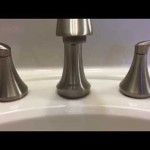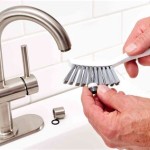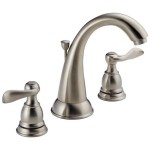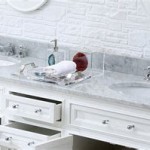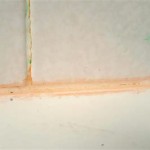```html
Correct Bathroom Sink Plumbing: A Comprehensive Guide
Proper bathroom sink plumbing is essential for ensuring effective drainage, preventing leaks, and maintaining a hygienic environment. Understanding the different components and their correct installation methods is crucial for both DIY enthusiasts and professional plumbers. This article provides a comprehensive overview of bathroom sink plumbing, covering the various parts, their functions, and best practices for installation and maintenance.
Understanding the Components of Bathroom Sink Plumbing
A typical bathroom sink plumbing system consists of several key components, each playing a vital role in the overall function. These components include the drain, the P-trap, the tailpiece, the supply lines, and the shut-off valves. Understanding the purpose of each part is the first step in successfully tackling any plumbing-related task. Improper installation of any of these parts can lead to leaks, clogs, and other plumbing problems.
The drain is the opening at the bottom of the sink where water flows out. It typically includes a strainer to catch hair and debris, preventing them from entering the drainpipe and causing blockages. The drain assembly connects to the tailpiece, which is a vertical pipe that extends downward from the drain.
The tailpiece connects to the P-trap, a U-shaped pipe that holds a small amount of water. This water creates a seal, preventing sewer gases from entering the bathroom. Sewer gases can be unpleasant and potentially harmful, so the P-trap is a critical safety feature in any plumbing system.
The outlet of the P-trap connects to the drainpipe, which carries wastewater away from the sink and into the main sewer line. This pipe is usually made of PVC or ABS plastic and is sloped slightly to ensure proper drainage.
Supply lines are flexible hoses or rigid pipes that carry hot and cold water from the main water supply to the faucet. They are typically made of copper, PEX, or braided stainless steel. Each supply line connects to a shut-off valve, which allows you to turn off the water supply to the sink without shutting off the water to the entire house.
Shut-off valves are essential for maintenance and repairs. They allow you to isolate the sink from the water supply, preventing water damage during repairs or replacements. It is recommended to exercise these valves periodically to prevent them from seizing up.
Step-by-Step Installation of Bathroom Sink Plumbing
Installing bathroom sink plumbing can be a straightforward process if followed carefully. The following steps outline the general procedure, but it's essential to consult local plumbing codes and manufacturer instructions for specific requirements and recommendations.
Step 1: Prepare the Workspace Before beginning, gather all necessary tools and materials, including a pipe wrench, adjustable wrench, plumber's tape, Teflon paste, a bucket, and safety glasses. Ensure the water supply to the bathroom is turned off at the main shut-off valve or individual shut-off valves for the sink. Place a bucket under the sink to catch any residual water.
Step 2: Install the Drain Assembly Apply plumber's putty to the underside of the drain flange and insert it into the drain opening of the sink. From underneath the sink, attach the rubber gasket, friction ring, and mounting nut to the drain tailpiece. Tighten the mounting nut securely, but not excessively, to create a watertight seal. Remove any excess plumber's putty.
Step 3: Connect the Tailpiece to the P-Trap Attach the tailpiece to the P-trap using a slip joint nut and washer. Ensure the washer is properly seated and tighten the nut hand-tight, followed by a slight tightening with a wrench. The P-trap should be aligned correctly to ensure proper drainage and prevent sags.
Step 4: Connect the P-Trap to the Drainpipe Connect the outlet of the P-trap to the drainpipe using another slip joint nut and washer. Again, ensure the washer is properly seated and tighten the nut securely. Ensure the drainpipe has the appropriate slope to allow for gravity-assisted drainage. A quarter-inch slope per foot is generally recommended.
Step 5: Install the Faucet and Supply Lines Install the faucet according to the manufacturer's instructions. Connect the supply lines to the faucet and the shut-off valves. Use plumber's tape or Teflon paste on the threaded connections to ensure a watertight seal. Tighten the connections with a wrench, avoiding excessive tightening.
Step 6: Test for Leaks Slowly turn on the water supply at the shut-off valves and carefully inspect all connections for leaks. If leaks are detected, tighten the connections further or disassemble and reapply plumber's tape or Teflon paste. Run water into the sink and check for proper drainage and any signs of leaks around the drain assembly and P-trap.
Step 7: Final Adjustments Once all connections are leak-free, make any necessary adjustments to the alignment of the pipes. Secure the pipes with pipe straps or clamps to prevent movement and vibration. Clean up the workspace and dispose of any waste materials properly.
Troubleshooting Common Bathroom Sink Plumbing Problems
Even with careful installation, bathroom sink plumbing can sometimes experience problems. Here are some common issues and their potential solutions:
Leaks: Leaks are a common problem in bathroom sink plumbing. They can occur at any connection, including the drain assembly, P-trap, supply lines, and faucet. To troubleshoot a leak, first identify the source. Tighten the connection if it is loose. If the leak persists, disassemble the connection and inspect the washers and seals. Replace any damaged or worn parts. Apply plumber's tape or Teflon paste to the threads before reassembling the connection.
Clogs: Clogs are another frequent issue in bathroom sink plumbing. They are typically caused by hair, soap scum, and other debris accumulating in the drainpipe. To clear a clog, start by removing the drain strainer and cleaning out any visible debris. If the clog is deeper, use a plunger or drain snake to dislodge it. If the clog is severe, you may need to disassemble the P-trap to remove the blockage.
Slow Drainage: Slow drainage can be caused by a partial clog or an improperly vented drainpipe. Check for any visible obstructions in the drainpipe and remove them. If the drainpipe is not properly vented, it can create a vacuum that slows down drainage. Consider installing an air admittance valve (AAV) to improve ventilation.
Sewer Gas Odor: A sewer gas odor indicates that the P-trap is not functioning properly. This could be due to a dry P-trap, a cracked P-trap, or a blocked vent pipe. To resolve this issue, first ensure that the P-trap contains water. If the P-trap is cracked, it needs to be replaced. Check the vent pipe for any blockages and clear them if necessary.
Low Water Pressure: Low water pressure can be caused by a variety of factors, including a clogged aerator, a kinked supply line, or a problem with the main water supply. Start by cleaning the aerator on the faucet. Check the supply lines for any kinks or obstructions. If the problem persists, consult a plumber to investigate the main water supply.
Regular maintenance, such as cleaning the drain strainer and flushing the drainpipe with hot water, can help prevent many of these problems. Addressing issues promptly can prevent them from escalating and causing more significant damage.
When dealing with plumbing, it is important to always adhere to local codes and regulations. These codes are in place to ensure safety and proper functionality of the plumbing system. If unsure about any aspect of plumbing installation or repair, consulting a licensed plumber is always recommended.
Furthermore, selecting high-quality materials for the plumbing system can extend its lifespan and reduce the likelihood of future problems. Investing in durable pipes, fittings, and fixtures can be a worthwhile investment in the long run.
```
How To Plumb A Bathroom With Multiple Plumbing Diagrams Hammerpedia
How To Install Bathroom Sink Drain Queen Bee Of Honey Dos

How To Fit A Bathroom Sink Diy Guides Victorian Plumbing

What Is The Bathroom Sink Plumbing Rough In Heights

Bathroom Sink Plumbing Diagram Diy Sinks Drain Kitchen Remodel

5 Natural Ways To Unclog A Bathroom Sink Hiller How

How To Unclog A Bathroom Sink Hana S Happy Home

Bathroom Sink Plumbing Installation

Bathroom Sink Drain Leaking Around Threads Premier Plumbing Inc
How To Install Bathroom Sink Drain Queen Bee Of Honey Dos
Related Posts

